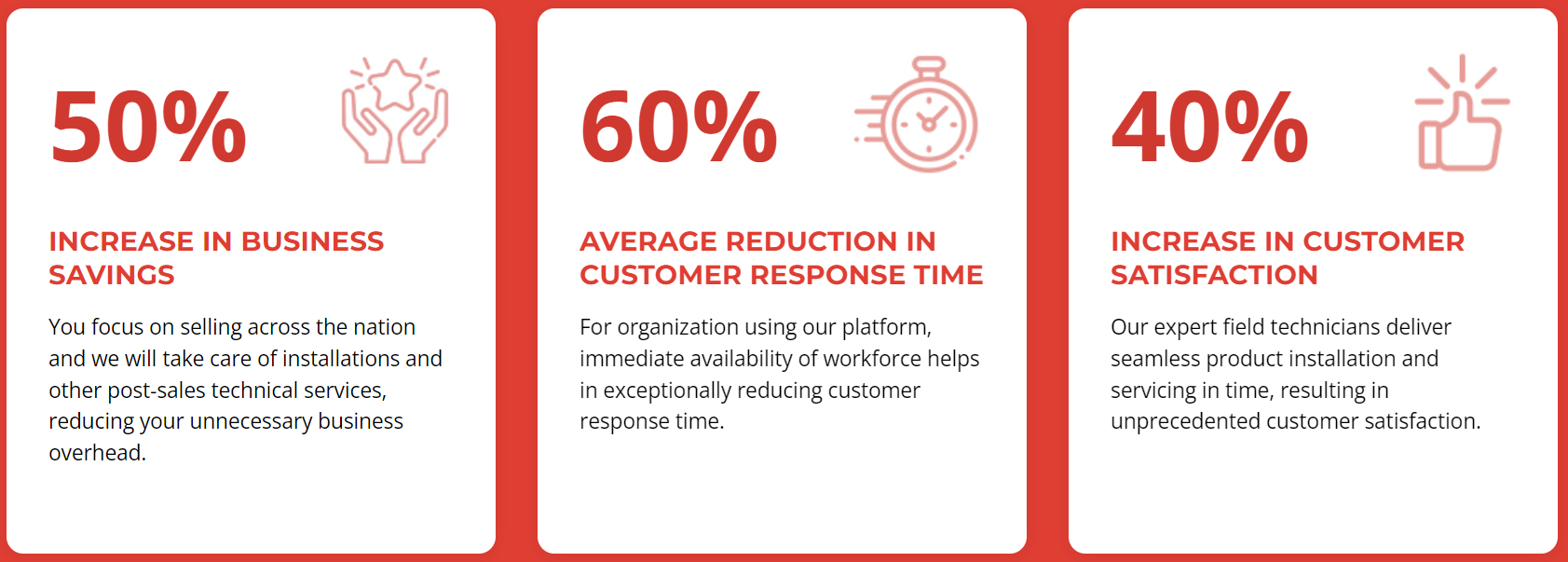MyMobiForce Blog
GIG Economy and Workforce in 2023: Rise, Benefits, & Growth in Organisation
6 May,2023 | 10:30 am

The gig economy has been rapidly growing in recent years, with more and more people opting for freelance or contract work instead of traditional full-time employment. This trend has been driven by a number of factors, including technological advancements, changing attitudes towards work, and the desire for greater flexibility and autonomy.
According to a report by Statista, the number of gig workers in the United States alone is projected to reach 86.5 million by 2027, up from 57 million in 2019. Similarly, in Europe, there has been a significant increase in the number of people working as freelancers, contractors, or self-employed individuals. This growth has been fueled by the rise of digital platforms and marketplaces that connect businesses with gig workers, making it easier than ever to find and hire qualified talent on an as-needed basis.
Gig Economy Growth in Field Services
One of the areas where gig workers have had a significant impact is in field services. Many companies now prefer to use gig workers instead of full-time employees for field services such as repair and maintenance, installation, and other tasks that require a high level of expertise. This is because gig workers are often more flexible and can be hired on an as-needed basis, reducing the company's labor costs and increasing efficiency.
For example, a company that provides HVAC repair services may have a core team of full-time technicians to handle routine maintenance and repairs. However, when there is a sudden surge in demand or a complex repair job that requires specialized expertise, the company may turn to gig workers to supplement its existing workforce. This allows the company to scale up or down as needed, without having to bear the cost of maintaining a large full-time staff.
In addition to cost savings and flexibility, gig workers also bring a number of other benefits to companies. For one, they tend to be highly motivated and focused, as they are often paid on a project-by-project basis and have a vested interest in delivering high-quality work. They are also typically more experienced and skilled in their particular field, as they have often worked in a variety of different roles and projects over the course of their careers.
Things to Keep in Mind When Building a GIG Workforce for Your Organisation
However, building a gig workforce requires careful planning and execution by company executives. The first step is to identify the specific tasks that can be outsourced to gig workers, taking into account the company's overall goals and objectives. Once these tasks have been identified, executives should focus on building a pool of qualified gig workers, which may involve partnering with gig platforms or agencies that specialize in connecting companies with gig workers.
Executives should also ensure that they have the right infrastructure and technology in place to manage a gig workforce effectively. Following factors should be kept in mind when building a GIG workforce:
Expertise: Organizations should seek gig workforce partners who specialize in their industry and understand their unique needs. A partner who has experience in their field will be able to provide better support and guidance, and ensure that gig workers have the necessary skills and expertise to meet the organization's needs.
Quality control: Organizations should work with partners who have established quality control measures to ensure that gig workers meet their standards. Partners who regularly monitor and evaluate gig workers can help organizations maintain consistency and quality across all their projects.
Flexibility: The gig workforce is all about flexibility, and organizations should choose a partner who can provide that flexibility. Partners who can offer a range of gig workers with varying skill sets and availability can help organizations find the right fit for each project.
Technology: Choosing a partner with advanced technology solutions can help organizations streamline the gig worker recruitment and management process. A partner who uses technology to automate processes such as onboarding, payroll, and compliance can save organizations time and money.
Reputation: Organizations should research a gig workforce partner's reputation before signing on. Partners who have a proven track record of success and positive reviews from other organizations are more likely to deliver quality results.
By considering these factors, organizations can select the right gig workforce partner to help them meet their business goals. Working with the right partner can lead to increased efficiency, cost savings, and access to specialized skills and expertise, ultimately contributing to the success of the organization.
Benefits of Choosing MyMobiForce to Build Your Workforce

GIG Economy Forecast
Looking five years down the line, the gig workforce is likely to continue to grow and evolve, driven by factors such as the increasing availability of digital platforms and the desire for more flexibility in work arrangements. However, companies will need to adapt to this changing landscape by investing in the right technology and processes to manage their gig workers effectively, while also ensuring that they comply with labor laws and regulations and provide a positive working experience for their gig workers.
One potential challenge for companies using gig workers is maintaining consistency and quality control. Since gig workers are often working on a project-by-project basis, they may not have the same level of institutional knowledge or experience as full-time employees. This can lead to inconsistencies in work quality and performance, which can negatively impact the company's reputation and bottom line.
Conclusion
The gig economy has brought about significant changes in the way we work, and it is reshaping the future of work. Companies that embrace the trend and build a gig workforce will be better positioned to succeed in the coming years. Building a gig workforce requires careful planning and execution, including identifying tasks that can be outsourced, building a pool of qualified gig workers, and implementing the right infrastructure and technology. The future of the gig workforce is bright, but it's not without its challenges. Companies must prepare for challenges such as consistency and quality control while seizing opportunities such as increased flexibility and access to expertise. By embracing the future of work and building a gig workforce, companies can stay ahead of the curve and succeed in the changing world of work.

